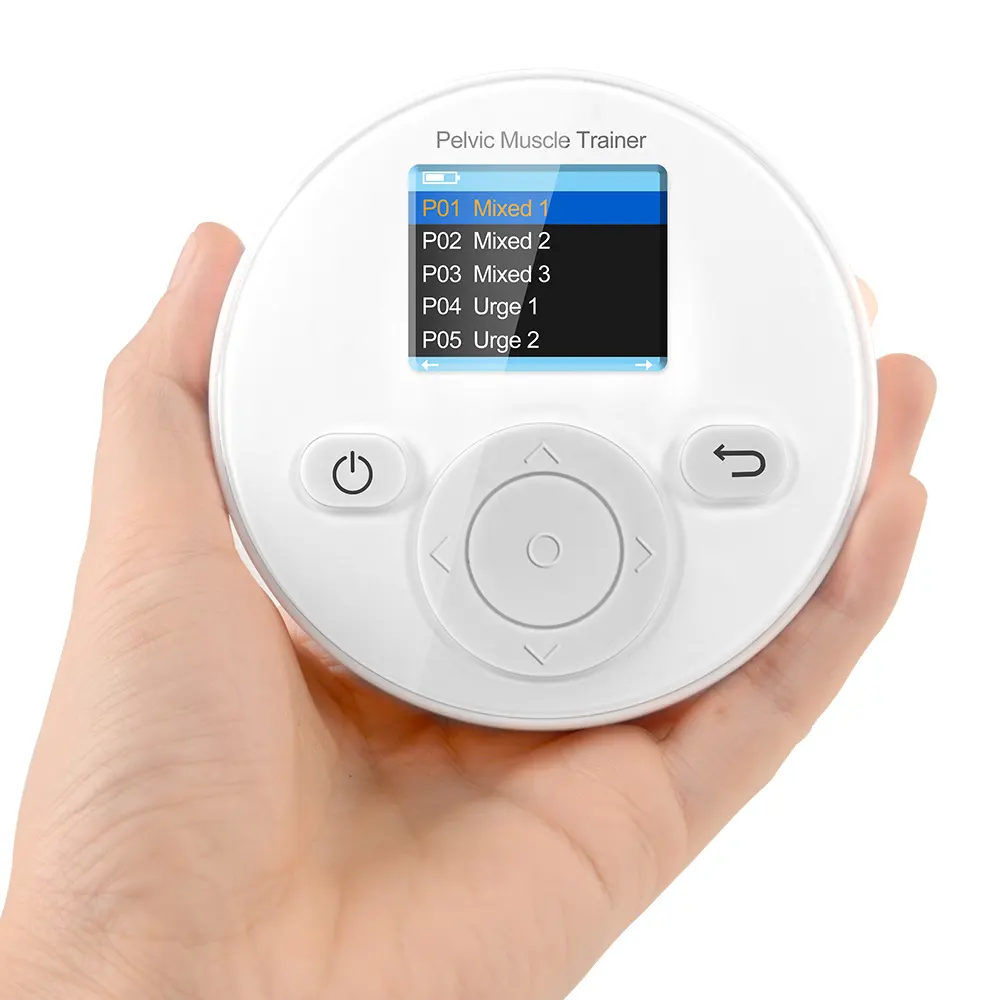Introducción
La palabra "incontinencia" suele venir acompañada de una gran carga: una sensación de vergüenza, una pérdida de control y el miedo a que tu vida diaria nunca vuelva a ser la misma. Ya sea una pequeña fuga cuando ríes o una necesidad más urgente difícil de controlar, lo primero que debes saber es esto: no estás solo, y puedes recuperar el control.
Manejar la incontinencia no se trata de ocultarla o limitar tu vida; se trata de adoptar estrategias inteligentes y proactivas que te permitan vivir plena y confiadamente. Esta guía definitiva va más allá de soluciones rápidas para ofrecer un marco integral para manejar la incontinencia urinaria e intestinal en tu vida diaria. Cubriremos productos prácticos, cambios efectivos en el estilo de vida, ejercicios esenciales y estrategias emocionales cruciales que, juntos, forman un plan hacia la libertad.
Capítulo 1: La base: Diagnóstico y comprensión
Antes de que pueda comenzar un manejo efectivo, es fundamental la comprensión. La incontinencia es un síntoma, no una enfermedad, y se presenta en diferentes formas.
Incontinencia por Esfuerzo: La pérdida de orina ocurre con presión física (estrés) sobre la vejiga al toser, estornudar, reír o hacer ejercicio.
Incontinencia por Urgencia: Un deseo súbito e intenso de orinar, seguido de una pérdida involuntaria de orina. A menudo está relacionado con una "vejiga hiperactiva".
Incontinencia por Rebosamiento: El goteo constante o frecuente de orina debido a una vejiga que no se vacía completamente.
Incontinencia Funcional: Una discapacidad física o mental (como artritis severa o demencia) le impide llegar al baño a tiempo.
Paso de acción 1: Consulte a un profesional de la salud.
La autogestión es eficaz, pero un diagnóstico adecuado es fundamental. Un médico puede descartar condiciones subyacentes (como infecciones del tracto urinario), identificar el tipo de incontinencia que padece y elaborar un plan de tratamiento específico. Este es su primer paso más importante.
Capítulo 2: El kit práctico: Productos para confianza y seguridad
Los productos adecuados son su primera línea de defensa, proporcionando la seguridad necesaria para participar en la vida diaria sin temor.
1. Productos absorbentes:
Almohadillas y protectores (salvaslips): Ideales para incontinencia de esfuerzo leve. Son discretos, se ajustan a la ropa interior normal y son perfectos para pérdidas menores.
Ropa interior protectora (braguitas desechables): Funcionan como ropa interior normal pero con alta absorción. Excelentes para incontinencia moderada, ofrecen fácil colocación y retiro.
Bragas con lengüetas: Diseñadas para incontinencia severa. Los lados con lengüetas permiten cambios fáciles de pie o acostado, lo cual puede ser útil para cuidadores o uso nocturno.
Almohadillas de control de la vejiga para hombres (bolsa antiguas): Bolsas especialmente diseñadas que se ajustan sobre el pene y se mantienen en su lugar mediante ropa interior ajustada, conteniendo fugas leves a moderadas.
2. Protección de la piel:
Cremas protectoras: Crean una capa protectora entre la piel y la humedad para prevenir irritaciones y erupciones.
Sprays limpiadores y geles de baño sin enjuague: Permiten una limpieza suave y completa sin necesidad de jabón ni agua, que pueden resecar la piel, especialmente en baños públicos.
3. Ayudas funcionales:
Protectores impermeables para colchones: Esenciales para una buena noche de sueño sin preocupaciones.
Orinales y comodines portátiles: Vitales para viajes en automóvil, salidas o uso junto a la cama cuando no hay un baño fácilmente accesible.
Sprays neutralizadores de olores: Formulados específicamente para eliminar el olor de orina, no solo para enmascararlo, proporcionando comodidad psicológica.
Capítulo 3: La hoja de ruta del estilo de vida: Hábitos diarios para un mejor control
Tu rutina diaria tiene un poder inmenso para gestionar y reducir los síntomas.
1. Manejo de líquidos (no se trata de beber menos):
Mantente hidratado: La orina concentrada es un irritante de la vejiga. Beba 6-8 vasos de agua distribuidos uniformemente durante el día.
Evite desencadenantes: Los irritantes comunes incluyen cafeína (café, té, refrescos), alcohol, edulcorantes artificiales, bebidas carbonatadas y alimentos picantes o ácidos (como tomates y cítricos). Intente eliminarlos durante una semana para ver si los síntomas mejoran.
Programar sorbos: Reduzca la ingesta de líquidos 2-3 horas antes de acostarse para disminuir las visitas nocturnas al baño.
2. Ajustes dietéticos para la salud de la vejiga e intestino:
La fibra es su amiga: El estreñimiento ejerce una presión inmensa sobre su vejiga y suelo pélvico. Una dieta rica en fibra (frutas, verduras, granos enteros) mantiene las heces blandas y fáciles de expulsar.
Controle sus hábitos intestinales: Busque tener una evacuación intestinal regular y diaria para aliviar la presión sobre la vejiga.
3. Reentrenamiento de la vejiga:
Esta técnica ayuda a restablecer las señales "hiperactivas" de tu vejiga.
Lleva un diario: Durante varios días, anota lo que bebes, cuándo orinas y cuándo ocurren fugas.
Crea un horario: Basándote en tu diario, establece momentos fijos para ir al baño (por ejemplo, cada 2 horas). Ve al baño a estas horas, con o sin ganas de orinar.
Amplía gradualmente: A lo largo de varias semanas, aumenta lentamente el tiempo entre las micciones programadas en 15-30 minutos. El objetivo es entrenar a tu vejiga para que contenga más orina durante períodos más largos.
4. Técnicas en el baño:
Miccionar dos veces: Después de orinar, espere un momento, inclínese hacia adelante e intente nuevamente para asegurarse de que su vejiga esté completamente vacía.
Evite esforzarse: No empuje ni haga fuerza al orinar o defecar, ya que esto debilita el suelo pélvico con el tiempo.
Capítulo 4: La fuerza interna del cuerpo: Construcción de un suelo pélvico resistente
Sus músculos del suelo pélvico son el sistema de soporte interno natural de su cuerpo para la continencia.
-
Los ejercicios de Kegel son fundamentales: Estos ejercicios fortalecen los músculos que controlan el flujo de orina.
Cómo hacerlos: Apriete los músculos que usaría para detener el flujo de orina o retener gases. Evite apretar los muslos, glúteos o abdomen. Mantenga la contracción durante 3-5 segundos, luego relaje durante 5-10 segundos. Intente realizar entre 10 y 15 repeticiones, 3 veces al día.
Sea paciente: Puede llevar de 3 a 6 meses de práctica constante para observar una mejora significativa en los síntomas de incontinencia.
Cuándo buscar ayuda profesional: Si no está seguro de que los esté realizando correctamente (¡muy común!), un fisioterapeuta del suelo pélvico puede proporcionar retroalimentación bioeléctrica y orientación personalizada para lograr la máxima eficacia.
Capítulo 5: Navegando por el mundo: Estrategias sociales y emocionales
El impacto psicológico de la incontinencia es real, pero puede controlarse.
1. Planificación de sus salidas (el plan "por si acaso"):
Localice los baños: Al llegar a un restaurante, centro comercial o parque, identifique los baños más cercanos.
Prepare una "bolsa de emergencia": Lleve una bolsa pequeña y discreta con un producto absorbente nuevo, una bolsa con cierre hermético para su eliminación, toallitas limpiadoras y un cambio de ropa interior en su automóvil o bolso.
Sabiduría para el Vestuario: Elija ropa que sea fácil de manejar rápidamente: cinturas elásticas, vestidos, y evite cinturones complicados o monos.
2. Manejar los Accidentes con Serenidad:
Mantén la calma: Los accidentes ocurren. Es una condición médica, no un fracaso personal.
Tenga un Plan de Eliminación: Lleve bolsas pequeñas con aroma para desechar productos usados (como las bolsas para excrementos de perro).
Conozca Su Frase: Si necesita excusarse, basta con decir de forma sencilla y segura: "Con permiso, regreso enseguida". No debe explicaciones a nadie.
3. Abordar el Impacto Emocional:
Hable con alguien: Confíe en un amigo, pareja o terapeuta de confianza. Compartir la carga puede ser increíblemente liberador.
Únase a un grupo de apoyo: Conectarse con otras personas que entienden su experiencia puede reducir los sentimientos de aislamiento y ofrecer consejos prácticos.
Enfóquese en lo que puede controlar: Cambia tu mentalidad de lo que has perdido a los pasos importantes que estás tomando para manejar tu salud.
Conclusión: Su vida, a su manera
Vivir con incontinencia es un proceso de adaptación, no una condena vitalicia de limitaciones. Al combinar el adecuado productos para seguridad inmediata, el inteligente hábitos de vida para mejoras a largo plazo, el específico exercicios para la fortaleza interna, y la compasión estrategias emocionales para el bienestar mental, puedes construir una vida definida no por el miedo a las fugas, sino por la confianza y la libertad.
Tienes el poder de ser el autor de tu historia. Comienza con un paso, tal vez programando una cita médica o comprando una muestra de productos absorbentes. Cada pequeña acción que tomes es una declaración de que tú estás al mando. Acepta estas estrategias, ten paciencia con tu progreso, y vuelve a tu vida con confianza.





